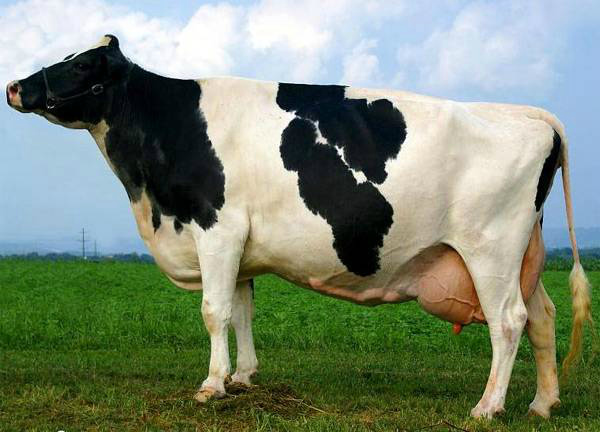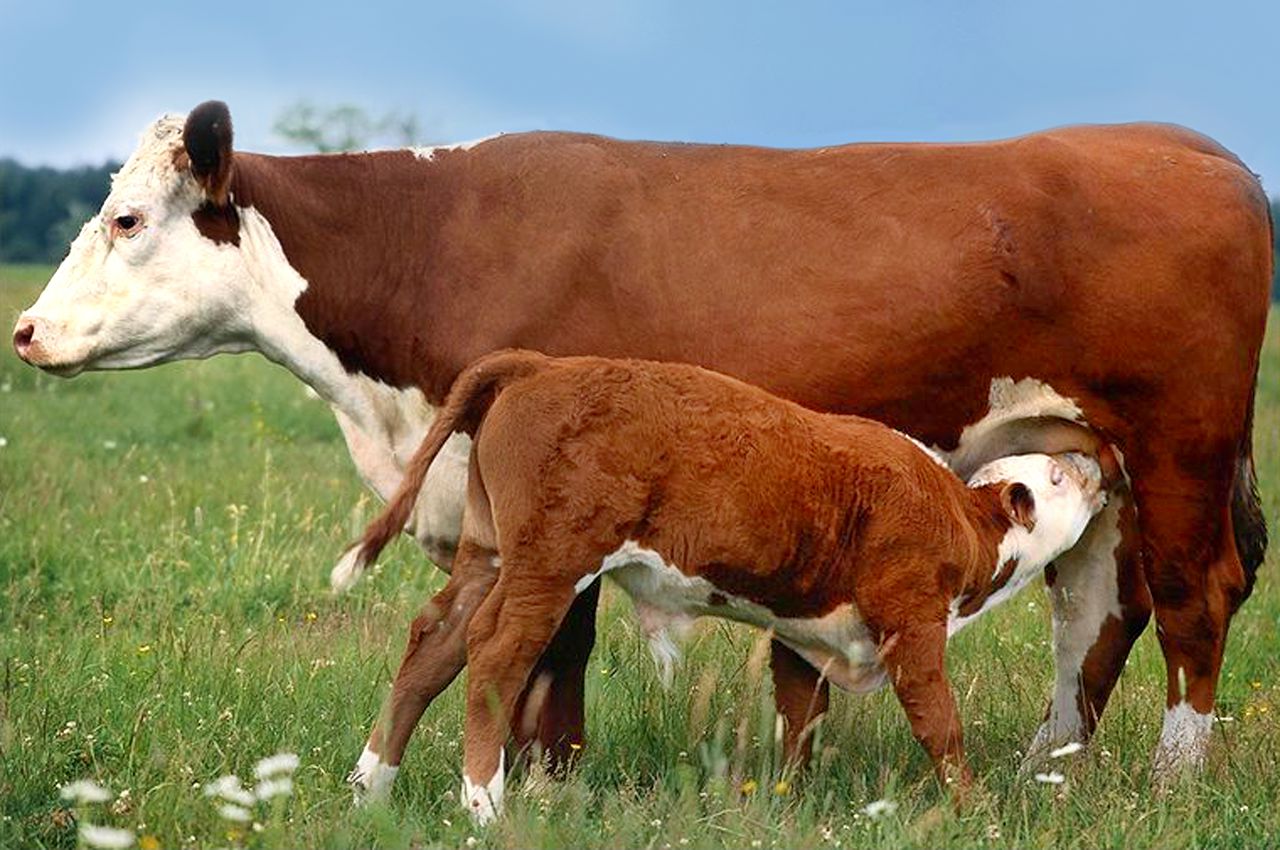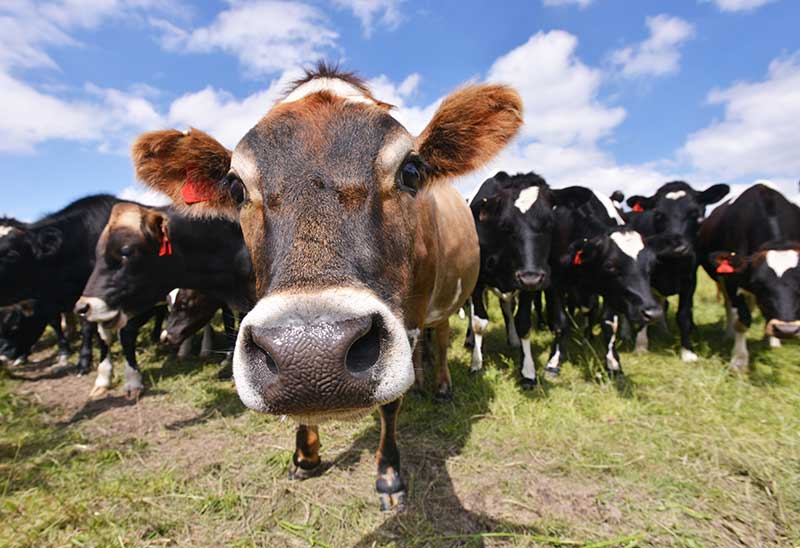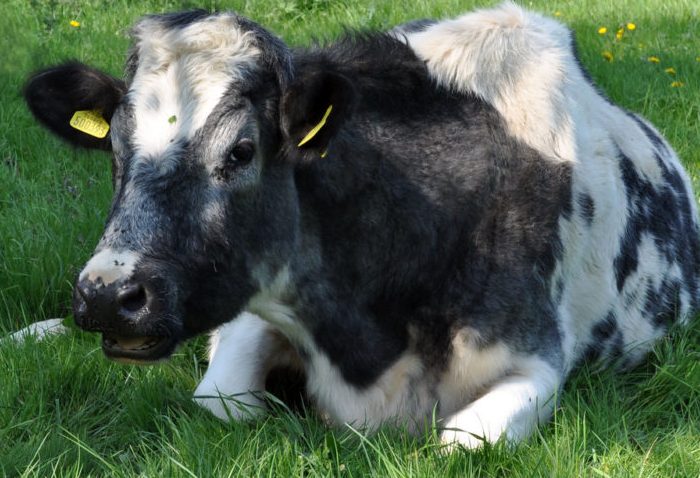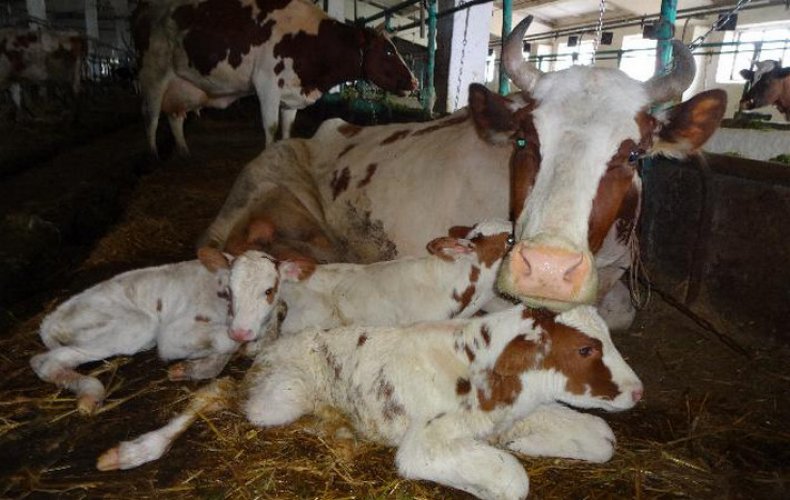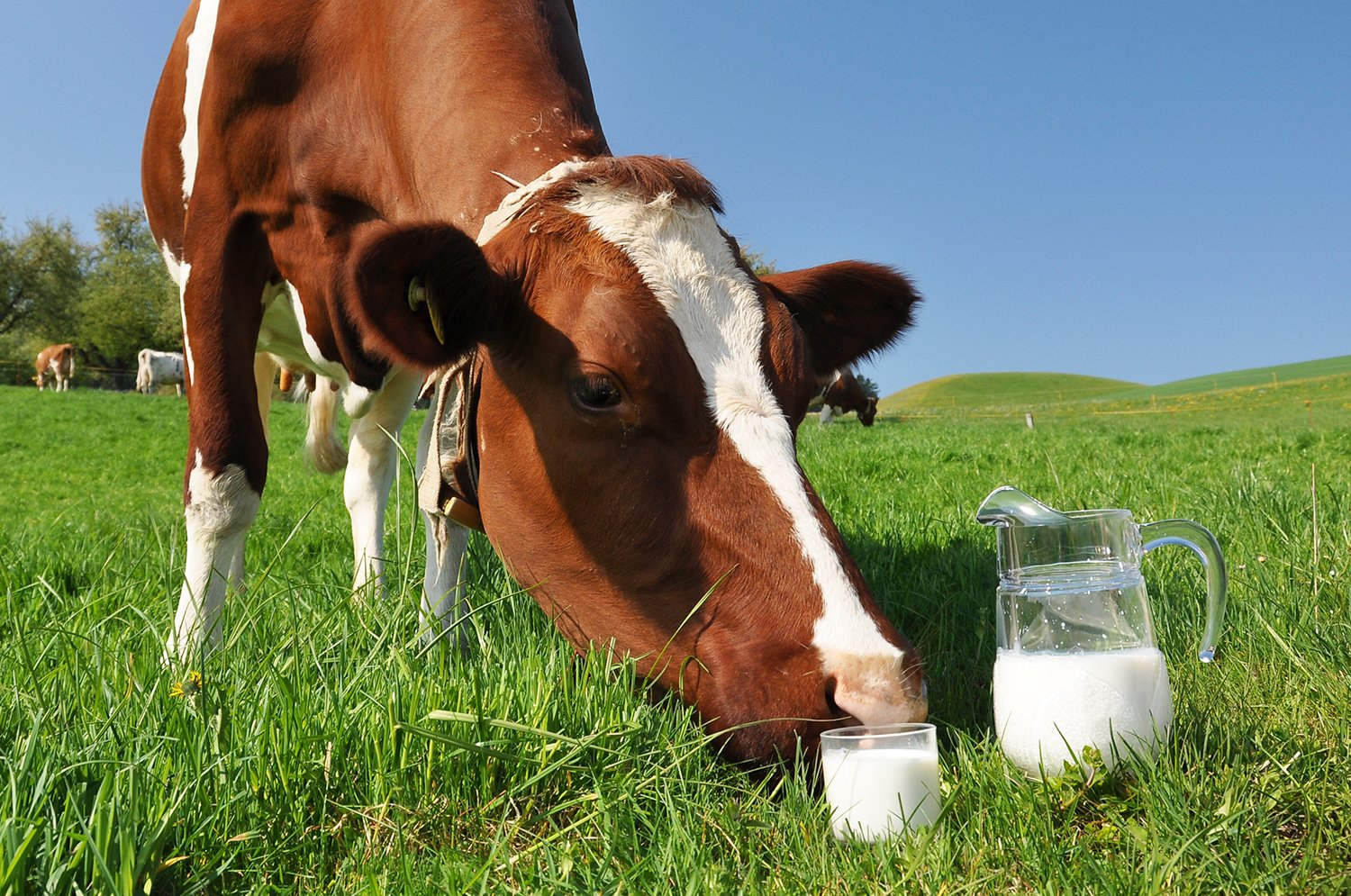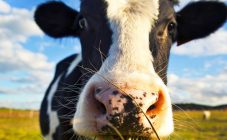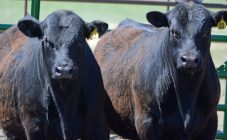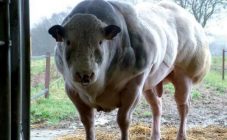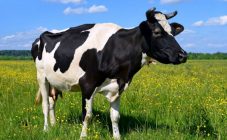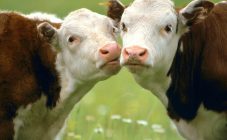Content:
The cow is the female of the domesticated subspecies of the bull. This is an artiodactyl species of ruminants. Since cows are popular as livestock in many countries, at present there are quite a large number of breeds of them, which, in accordance with the main direction of economic use, are divided into meat, dairy and meat and dairy breeds.
All about cows
Burenka in the form in which we know it today did not always exist. The most ancient ancestor of cows is considered the wild Eurasian tour. This animal appeared about 2 million years ago and for a long time inhabited the territories of Europe, Asia and North Africa. The extinction of the species was subsequently seriously facilitated by three processes: hunting, the reduction of forest areas and the domestication of wild animals by our ancient ancestors.
The closest modern relatives of the cow are zebu, buffalo, banteng, yak and gaura.
It will not be possible to name the cow's homeland unequivocally. Since these pets are common not only in Eurasia, but were also brought to America at one time, even initially they could live in a fairly wide territory.
Many people wonder how much an average live cow can weigh. It all depends on parameters such as age, breed and category of the animal. This means that there is simply no definite answer to how much a cow weighs. The indicator varies within a fairly wide range. On average, weight can vary from 300 to 500 kilograms. The largest species is Holstein, it can grow up to 800 kg. But this is rather an exception, while this result can be achieved only if the animals are properly fed.
Some less experienced breeders wonder how many stomachs a cow has. The digestive system of a cow and its structure have features, but the number of stomachs still does not exceed one.
A cow's stomach has several compartments, each of which has a different function. In general, cow digestion and digestion are no different from other mammals. The bovine digestive tract functions in a similar manner to that of other animals. The absolute length of the entire intestine averages about 51 meters.
Some are interested in how the cow sleeps: standing or lying down. In the case of all cattle, both options are possible. This largely depends on the conditions in which the cows are kept, and what place in the herd hierarchy a particular cow has. Normal cattle care implies the need to create a condition for the animal in which it can rest in a normal lying position. The duration of sleep is influenced by the age of the individual (older cows sleep less).But the average varies from 8 to 12 hours.
Answering the question of how many years cows live, one cannot fail to note their living conditions. The average is between 15 and 17 years, but if the animal is properly cared for in all respects, the cow's lifespan can extend to 22 or even 25 years.
The age of an animal is determined by its horns or teeth. When determining which year a cow lives, by the teeth one should pay attention to the condition of the jaw, namely, the number of molars (complete replacement of milk teeth with molars is completed in cows at the age of three and a half years) and the state of the enamel. From about the fifth year of the life of the cow, the enamel begins to gradually wear off. If the teeth are a single bony plate, then the individual is over 10 years old. The rings on the horns indicate the number of calving. If there is only one ring, the cow has calved only once. This usually happens between the ages of 2 and 2.5 years.
Cows produce milk when lactation begins. Its amount depends on the specific breed and the characteristics of its content. An experienced breeder knows how to properly manage the lactation process of cattle. As a result, if you make some effort, you can get animals whose productivity will be above average.
The normal body temperature of a cow is from 37.5 to 39 C. If for some reason it rises above 41 C, it is strongly recommended to immediately involve a specialist. With a high degree of probability, the animal has begun some kind of inflammatory process.
A cow is not the fastest animal. It moves at an average speed of one to three kilometers per hour. A cow can also run, and at a speed of 30 to 40 km / h. But she can do this for a very short period of time.
It is not too easy to calculate the total amount of blood in a cow. It largely depends on the size of the cattle. As a percentage of the total body count, it is 8.1%.
Features of the structure of the cow
Most people, even those who are very far from the livestock industry, know very well what a cow looks like. But the more detailed structure that this type of KRZ has remains unknown to many. Let's try to consider it in more detail.
The head that this livestock has is very large. It is located with the spine on the same axis. Facial features are expressed quite clearly, which is a characteristic feature of a pet.
The size of the cow's skull is also very large, as is the brain, completely enclosed by the cranium. It is connected to the skeleton through the cervical vertebra. The bones of the skull are very strong and can withstand heavy impact. In addition, cows have well-developed occipital muscles, thanks to which the body of the cow does not feel fatigue when the animal spends a long time grazing with its head down.
The eyes of the cows are very expressive, and the eyelashes are hard and long. The structure of the eye does not allow the cow to perceive colors normally. They see only white well, and they do not distinguish between green and red at all. Some of the awkwardness of cows is largely due to the fact that they see things on a larger scale.
The answer to the question of how many teeth a cow has is quite simple - 32, like a human. But they are missing fangs. At birth, a calf has 20 teeth, which, as it grows, change to molars.
Unlike sight, cows' hearing is truly unique - they can memorize and respond to melodies.
The skeleton of an animal is distinguished by strong bones. The spine is divided into five sections. The forelimbs of the cow are supported by the thoracic region. There are also auxiliary bones that connect the limbs to the skeleton. For the front, these are the shoulder blades, forearms, and also the hands, and for the hind ones, the hip bones, lower legs and thighs. All limbs of the cow end in cloven-toed hooves (hence the name - artiodactyls).
The tail of a cow, like other herbivorous cattle, is used to fight insects: flies, gadflies, mosquitoes, etc. With the help of it, the animal waves them off.
What is a forage cow
A forage cow is essentially a dairy cow that receives complementary feed in the form of forage. The latter contains a large amount of protein, which, in turn, increases productivity. In Soviet times, when such a thing as a farm did not exist in principle, but there were collective and state farms, they made calculations of fodder individuals on the farm. This was done in order to determine the volume of the food supply. Milk yield was also calculated per forage cow. Thus, the term has more to do with economics than agriculture.
Sexual cycle and reproduction
By the sexual cycle of cows, we mean the period between hunts. Its normal duration is 21 days. The normal range is 18 to 24 days. A shortened cycle usually indicates violations of the neuro-humoral regulation of the reproductive function (we are talking about cysts or a hypofunctional state of the ovaries). Elongated is most often caused by inflammatory processes in the uterus or fetal mortality.
Calving in a cow occurs approximately as follows: during childbirth, the animal lies on its left side or stands. Determining if the calf is coming out correctly is quite simple: it should be positioned with the front hooves up. The calf hatching process is not too long - it lasts about half an hour. If after this period of time the baby does not come out, and the attempts have weakened, the animal will need the help of a person, ideally a veterinarian.
The born calf is taken on a pre-disinfected piece of tissue, the umbilical cord is treated with iodine.
Interesting facts about cows
Children often ask their parents why cows eat green grass and milk gives white. The answer has to do with the casein content of milk. It is he who gives the white color to the product. But there are really interesting facts about these wonderful animals.
Cows have panoramic vision
Regardless of what kind of cows we are talking about: Jersey or some other, the animals' vision is almost panoramic - three hundred and sixty degrees. This allows the animals to notice any predator in time and live a little longer. It is impossible to sneak up behind a cow unnoticed.
Cows are sacred animals
In India, the cow is a sacred animal. For her murder and even injury, you can get a real prison sentence. The dairy cow is especially highly revered. Hearing the sound of a cow mooing, the Hindus believe that grace has descended on them.
Cows have a great appetite
Despite the fact that the ventricle of cows does not have the largest volume, due to its excellent metabolism, they are able to eat more than 45 kg of food during the day and drink about 180 liters of water.
Mooing can be different
Everyone knows how a cow can scream. But not everyone knows that she can bellow in different ways. Lingering mooing in higher tones speaks of poor health.Rhythmic and prolonged mooing demonstrates a greeting, and a dreary and drawn-out "muu" with a high degree of probability can signal the beginning of a cow's sexual activity.
Livestock of cows in Russia
At the beginning of 2018, the number of heads of cattle (in particular, cows) decreased by 0.6% compared to last year. The figure was 18.6 cows. The decline in livestock is not critical, but it clearly raises questions about where this trend comes from, and whether agriculture expects a further decline in the indicator.
Cow care rules
Caring for a cow at home is not difficult, but rather painstaking. The fauna is arranged in such a way that most animals are able, in principle, to live independently. The cow is not among those. It was domesticated too long ago, and without human intervention, the animal simply will not have a chance.
The basic rules are as follows:
- The animal needs to be provided with a bright, dry and well-ventilated room.
- The floor where the cow lives should be clean, dry and soft.
- It is necessary to periodically clean the animal's fur using special hard brushes.
- Cows must be washed before and after milking.
- During the warmer months, animals should be bathed.
- It is necessary to provide the animal with a balanced diet.
- In no case should you forget about caring for your hooves.
The livestock breeder learns all the nuances of caring for a cow from his own experience.
How much to boil milk
If milk is intended for feeding a baby, it must be boiled thoroughly. When boiling, keep it on fire for two minutes, remove the film and turn off the tile. This time is enough to kill all pathogens in the milk from the cow.
